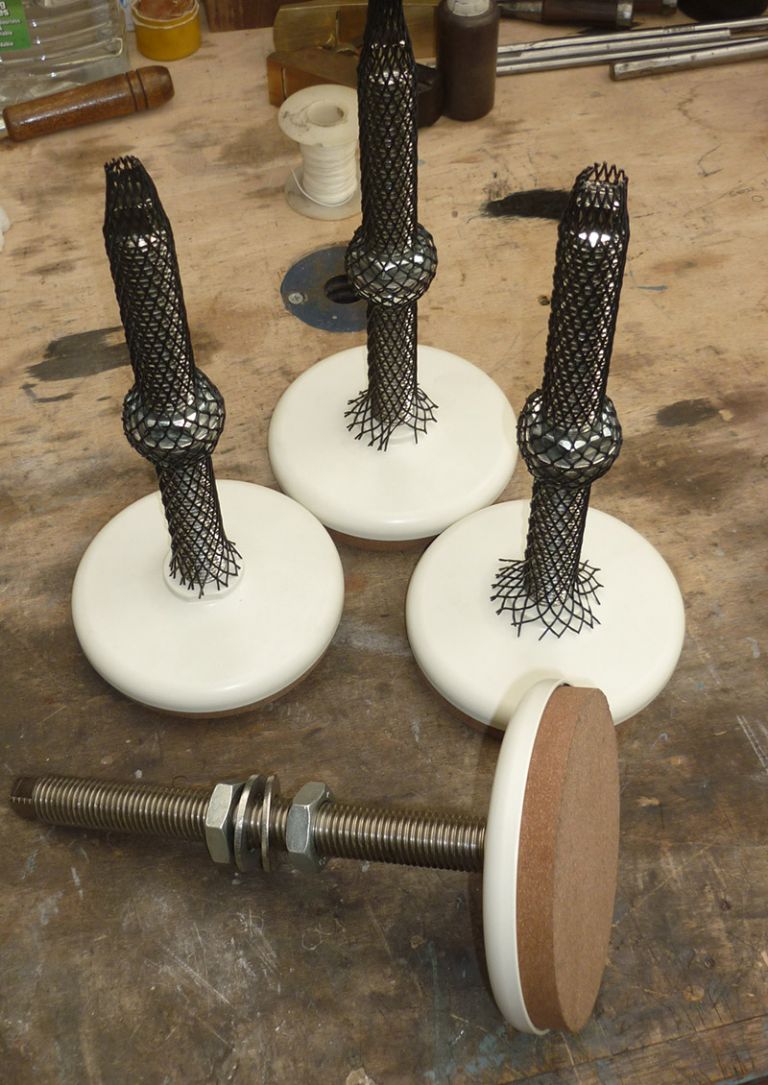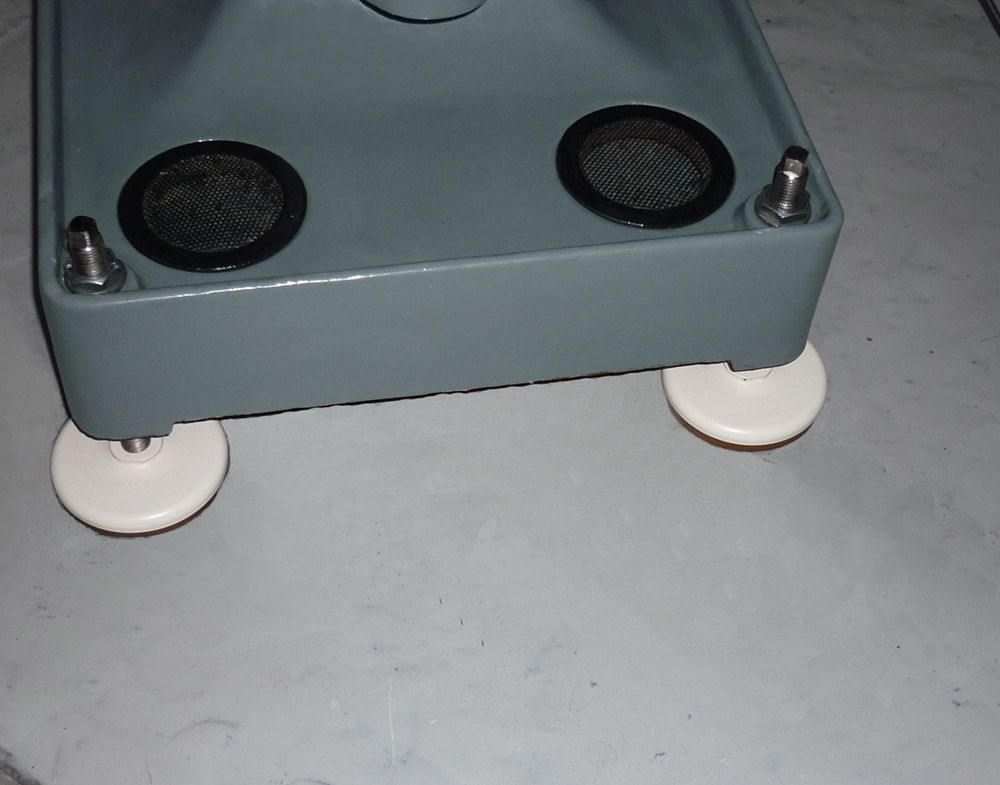Plug the centre with something softer than cast iron, I've used both wood and alloy, and run a hole saw in. Pre-drill the plug for the hole saw centre drill and either use the centre drill as a simple location pin or replace it with a plain pin made for the job. You will probably need to either knock the centre support through a bit after a 1/4" or so to give swarf clerance or break up the top section to achieve same result.
I've done the deed with both wood and alloy plugs. Were I to do it again I'd probably use a wood plug with oversize guide pin and trim down for swarf clerance using one of the flat round counterbores sold for wood work. Easy for me to say as I have a set of such counterbores. Lidl special, got for occasional use and have proven well worth the price.
An alternative to plugging the centre is a Starrett "Ooops" (yup they really call it that) hole saw carrier made to use when you have made a hole too small. It puts the too small holesaw inside the correct one so it acts as a guide. I have one and used it to enlarge holes in sheet steel and see no reason why it wouldn't work for you If your existing holes are reasonably round.
At that depth you may need to put an extension shaft on the hole saw.
Best result I got with this technique was re-furbishing the seriously oval plain bearings on a well worn Southbend countershaft. These run the steel shaft direct in the casting and last well providing the user remembers to put oil in the oil cups as the design includes a thick felt distribution wiper in a groove on the upper surface beneath the oil cup. No felts, no oil cups and over 1/8" ovality on the worse side of mine. Using the plug and holesaw technique I was able to get both sides out to a sensible dimension and close enough in line to line reamer with a kingpin reamer. The shaft even came out square to the base. I suspect I got a bit lucky but the technique does work.
Clive.
Edited By Clive Foster on 14/10/2016 17:15:49
Hopper.






